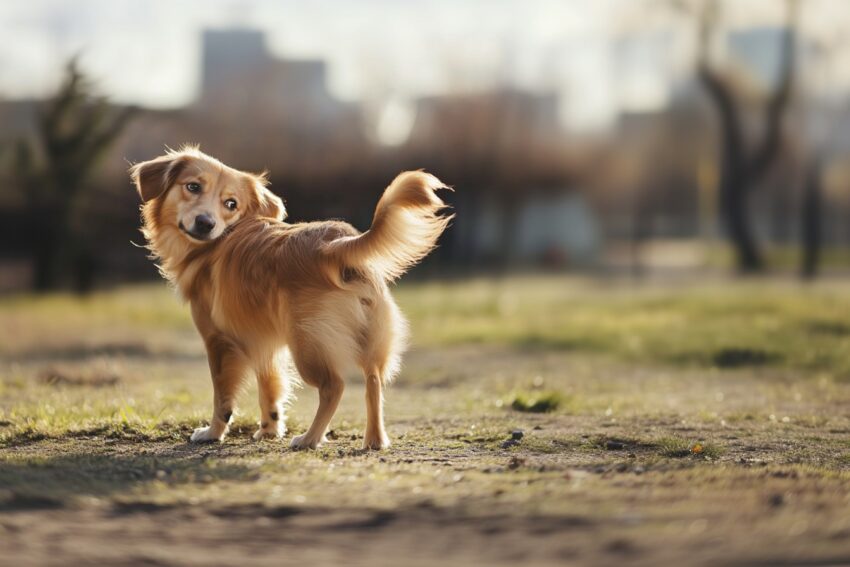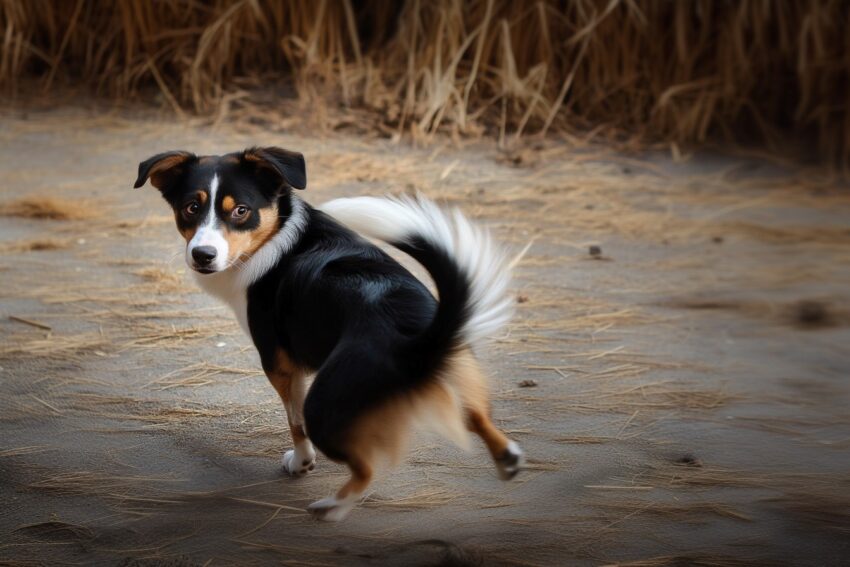There’s nothing more fun than watching a dog twirl happily chasing its own tail. But what’s behind this strange dog behavior? Is it all fun or does it hint at something more serious? Let’s take a look at why dogs chase their tails, when it’s appropriate, and what to do if it becomes a concern.
What does it mean when a dog chases its tail?
Chasing the tail is a natural behavior for dogs. For example, puppies often chase their own tails out of curiosity. Since they are still learning about their bodies, they may not realize that they actually have a tail. For adult dogs, tail chasing serves a variety of purposes.
- playfulness: Some dogs chase their tails just for fun. They may treat you like a toy, especially when they’re energetic or bored.
- attract attention: Dogs are incredibly smart and quickly learn how to get our attention. If you laugh or engage while your dog is chasing its tail, your dog is likely to repeat the same behavior to keep you focused.
- instinctive behavior: Tail-chasing behavior may also come from a dog’s predatory instinct. Tail movements can trigger a natural urge to chase.
- release of excess energy: High-energy breeds, or dogs that don’t receive enough physical or mental stimulation, may chase their tails as an outlet for pent-up energy.
Tail tracking is often harmless, but it can also indicate an underlying problem.
When is it inappropriate to chase your tail?
Tail-chasing is usually a playful or exploratory behavior, but it can be a red flag in certain situations. If your dog relentlessly chases his tail or exhibits other unusual behavior, it’s worth paying close attention to.
1. health problems
Tail-chasing behavior can indicate physical discomfort, such as:
- fleas or parasites: Fleas and ticks near the tail area can cause itching and irritation, causing your dog to chase and bite the tail.
- allergy: Food and environmental allergies can cause itching and discomfort, which can lead to tail chasing.
- injury: A sprain or other injury near the tail can cause this behavior when the dog is trying to cope with pain.
- anal gland problems: in the case of dog anal glands If they are full or infected, they may chase their tails to relieve discomfort.
2. behavioral concerns
Tail chasing can also result from psychological issues.
- obsessive compulsive disorder: In some cases, dogs may develop compulsive behaviors such as constantly chasing their tail. This is often caused by stress, anxiety, and lack of stimulation.
- boredom: If a dog is left alone or without doing anything for a long period of time, he may start chasing his tail out of sheer boredom.
3. developmental problems
Some dogs, especially those with neurological conditions, may chase their tails due to cognitive or sensory issues.
If you’re not sure why your dog chases its tail, consult your veterinarian to rule out medical or behavioral problems.
How to deal with problematic tailing

If you notice that your dog’s tail-chasing becomes excessive or worrying, try the following steps:
1. eliminate medical problems
First, consult your veterinarian to resolve any potential health problems. You can check for parasites, injuries, or other physical causes of the behavior.
2. Provide more exercise and mental stimulation
Dogs with more outlets for their energy are less likely to develop compulsive behaviors. Daily walks, shopping, interactive toysor training sessions will help focus your dog’s mind and body.
3. reduce stress and anxiety
Create an environment where your dog feels calm. If they seem anxious, consider tools like anxiety-reducing wraps or calming sprays, or even consult a behaviorist for training strategies.
4. discourage the behavior
If tail chasing is a problem, give your dog your attention when he starts the behavior. Shift their focus by offering toys, treats, and engaging them in games.
5. Monitor compulsive behavior
If your dog continues to chase its tail despite your efforts, it’s time to consult a professional. A veterinarian or animal behaviorist can help identify the root cause and develop a treatment plan.
When to see a veterinarian
If your dog’s tail chasing is frequent, obsessive, or accompanied by other symptoms such as hair loss, pain, or lethargy, seek professional advice immediately. Your veterinarian can help you determine whether the behavior is medical, behavioral, or both.
Frequently asked questions about dogs and tail chasing

Why does my dog bite his tail and spin around?
Dogs may bite their tails and spin around if they experience discomfort such as itching or pain. This can be caused by parasites, skin conditions, or boredom. If the behavior is frequent or aggressive, investigate further.
Do dogs know that they have tails?
Puppies in particular may not realize that their tail is part of their body. To them it may seem like an interesting toy. As dogs grow, most dogs recognize their tails as part of themselves, but some dogs playfully chase their tails out of habit or for fun.
Is a dog chasing its tail a sign of OCD?
Yes, tail chasing can be a symptom of obsessive-compulsive disorder (OCD). Dogs with OCD exhibit repetitive behaviors, such as excessive tail chasing, even when there is no clear trigger. This condition often requires behavioral therapy and sometimes drug therapy.
Is it dangerous for a dog to chase its own tail?
In most cases, tailing is harmless. However, excessive or aggressive tail chasing can lead to injuries such as cuts and sores on the tail. If your dog bites its tail and causes damage, intervention is required.
Why do some breeds chase their tails more than others?
Certain dog breeds, such as bull terriers and German shepherds, have a tendency to compulsively chase their tails. This may be due to a combination of genetic predisposition and high energy levels.
final thoughts
Chasing their tail is a fun habit, but it’s essential to understand the reasons behind it. For most dogs, it’s a harmless expression of energy or curiosity. However, if it becomes obsessive or shows signs of discomfort, it is important to take action. By paying close attention to your dog’s behavior and addressing any concerns early on, you can ensure that your dog is happy, healthy, and having fun. No need to chase your tail.





